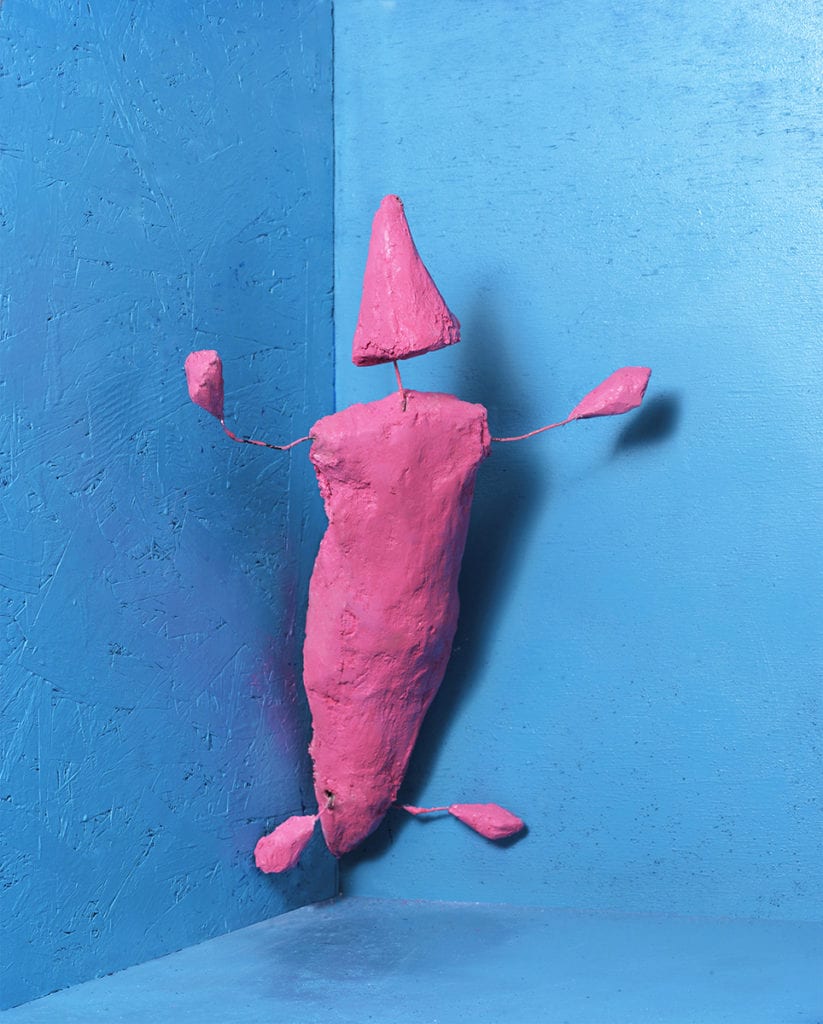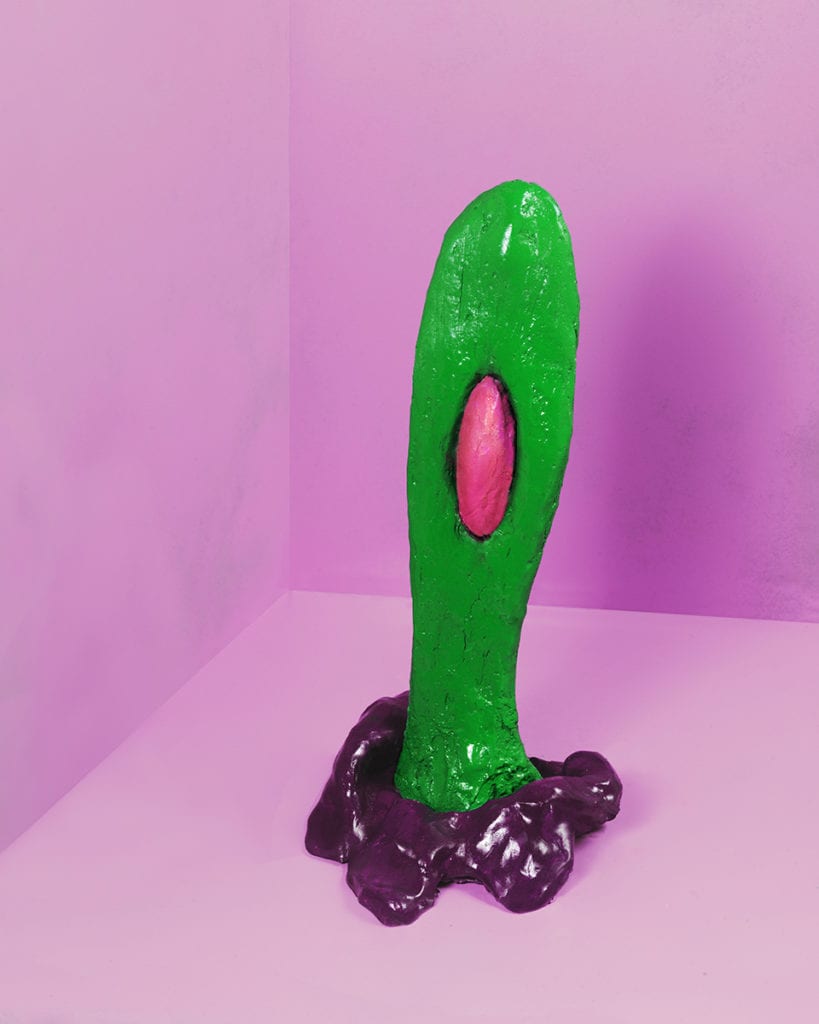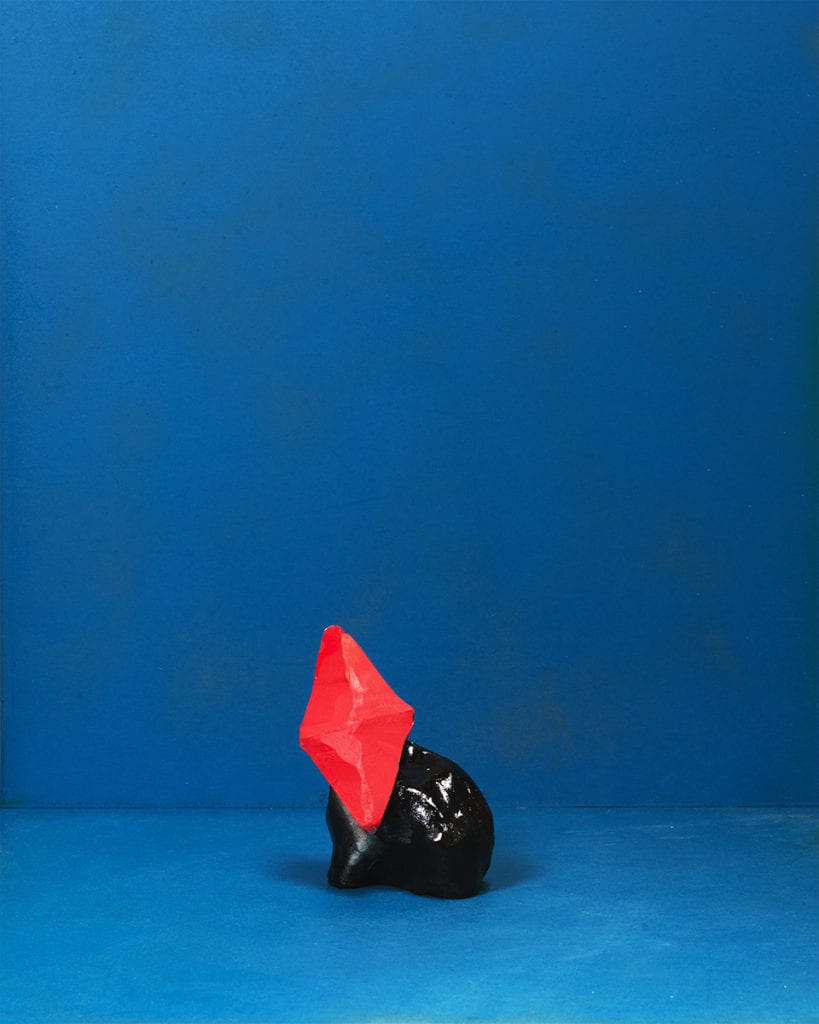Curiosa comprises a series of images depicting colourful, amorphous forms — a cabinet of curiosities conceived of by Andrey Zouari. “I wanted to connect myself to my inner child, free myself from adult knowledge and abandon myself to a spontaneous and raw creative impulse,” says the artist, who worked on the project during a residency in Paris at Le Consulat.
The objects reflect Zouari’s impulses but they should also provoke a primal reaction in us. “The wunderkammer reveals the archetypes buried in the unconscious depths, the premises of the creation of sexual identity,” he says. “Curiosa is an invitation to repair oneself, to free oneself from the gendered roles in which education and life have locked us up.”
This year, one of Zouari’s images was selected for the Baron Prize for Art, and below, the artist discusses his practice and the experience of making Curiosa.
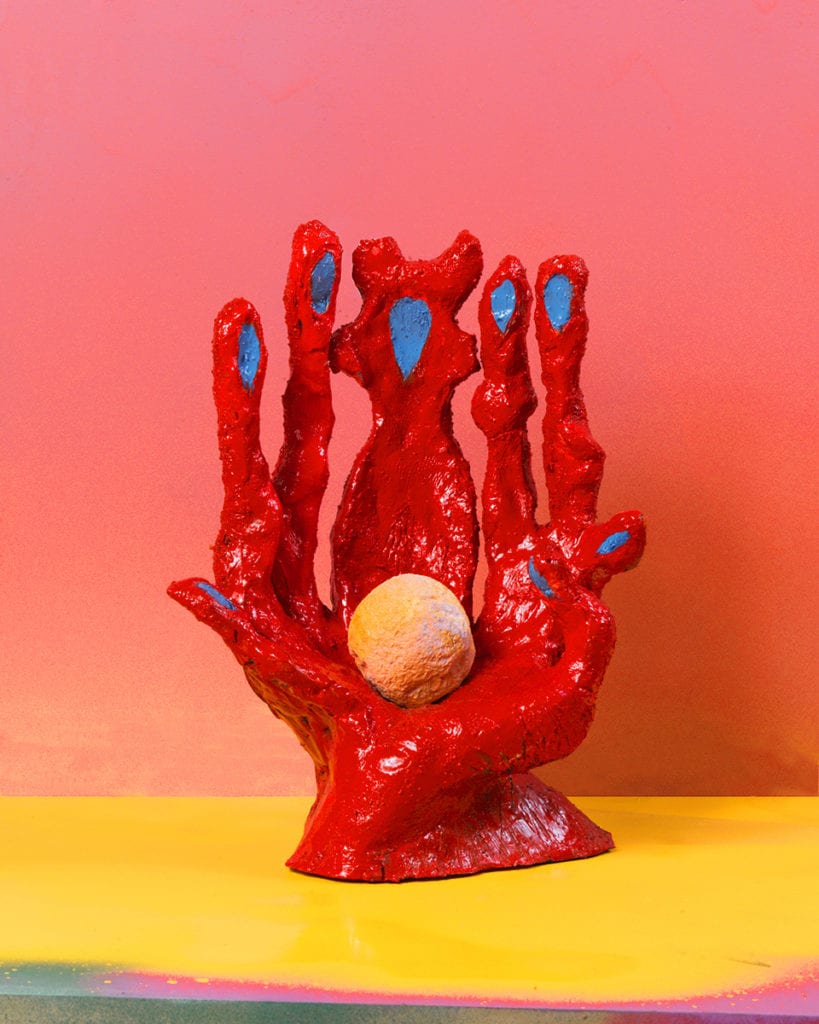
—
How would you describe your practice?
Whatever my subject, the common denominator has always been to have a starting point that stems from a form of deep introspection, achieved through meditation or hypnosis. The will to go to the deepest part of oneself. What is more intimate, more secret, more grotesque?
I always start from this impulsive and spontaneous material and then explore it through a medium. I work on instinct, on intuition, and I sometimes let myself be guided by details — a feeling, a taste for a texture or a colour, especially blue. The meaning of my work always appears to me after the fact.
Whether I am working on scenographies or shooting snapshots of friends during apocalyptic evenings, I am always searching for a particular vibration.
What are the central themes of Curiosa?
The starting point for the work was the desire to create a Wunderkammer (a cabinet of curiosities) — a set of pictorially seductive arrangements. From this, emerged the series’ central theme: a reflection on the question of gender and reproduction. I have always had the feeling of being inhabited by different female and male entities that interact with one another and that are sometimes in conflict.
The Wunderkammer turned into a wall of figures – variations on Jungian archetypes. I thought that it would be possible, through these arrangements, to create an emotional and unconscious link between my archetypal figures and those of my viewers — whatever their sex, age, past and culture. Each photograph provides the opportunity for an inner journey into the world of primary impulses.
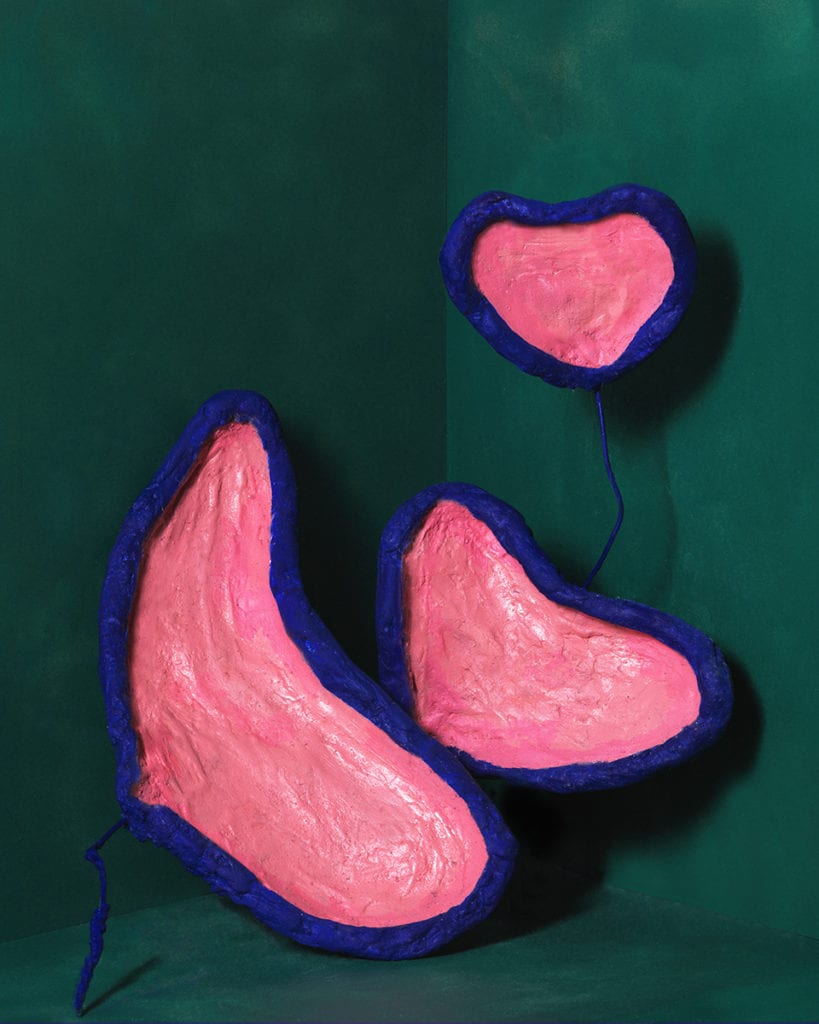
The colour blue runs through the work. What is its significance?
I did not realise that she was still running through my work But, that is not surprising, she is an old friend. For over ten years, and especially for one of my previous series Blue Gondola Project, she was the starting point and finish. Each of my creations originated from the colour blue because it appeared in all my meditative trances. It has a particular vibration that I cannot find in any other colour. I have the intuition that my fixation on this colour is traumatic, like a childhood memory. Just before the Curiosa series, I felt compelled to distance myself from this colour that was engulfing me. But, I do not mind that it remains — appearing discreetly in my work; a tenuous bond with my wounded inner child.
Can you explain your creative process? Do you make the objects depicted in the images — how do you conceive of the shapes, colours, and the arrangements?
To begin with, I made drawings, created in a state of semi-consciousness, of the whole Wunderkammer. The colours were present from the start, in a very clear way, along with the angles of view. I sculpted the shapes, taking care to remain as close as possible to the basic drawings. I worked with plaster, mortar, wire and ceramics. I wanted to move away from materials that would require activating more technical skills and away from any temptation to ‘corrupt’ the originals.
